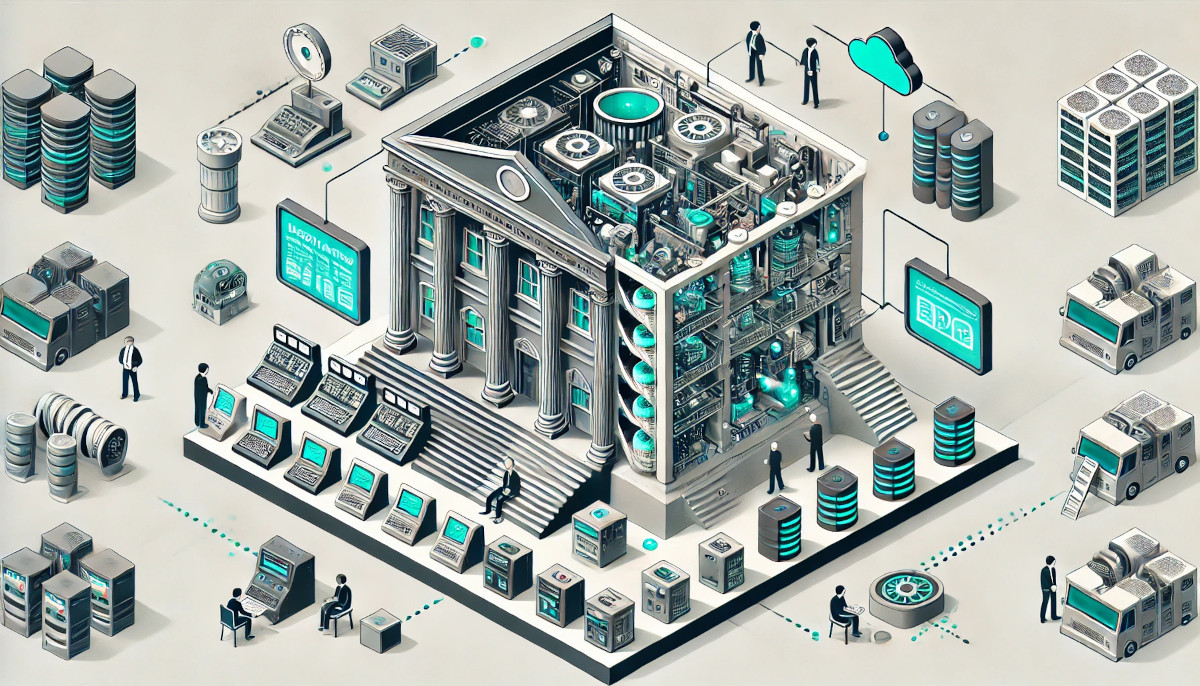Modernizing the Backbone: Legacy System Transformation in Banking

Banking on Change
In an era defined by digital acceleration, many financial institutions find themselves navigating a paradox: while customer-facing applications showcase innovation and agility, the core systems behind them remain rooted in legacy infrastructure. These outdated platforms—often built in COBOL or similar decades-old languages—continue to support critical banking functions, from payment processing to customer records.
However, rising regulatory scrutiny, cybersecurity risks, and increasing operational inefficiencies have propelled legacy system modernization from an IT concern to a board-level strategic imperative. The cost of delay is no longer just technical debt—it is competitive disadvantage.
Legacy Tech in Banking: A Risky Foundation
Legacy systems persist at the heart of global banking operations. Core banking platforms, payment rails, loan origination systems, and even CRM engines often rely on mainframe architectures developed in the 1970s and 80s. While these systems were built for reliability and scale, they now struggle to accommodate today’s requirements for real-time data access, cloud integration, and API-based ecosystems.
The operational and reputational risks are significant. System outages caused by brittle codebases or undocumented dependencies have led to widespread service disruptions, regulatory interventions, and loss of customer trust. With 78% of core banking systems reportedly incompatible with modern compliance or security standards, the urgency to modernize has never been more acute.
Compliance & Regulatory Deadlines Driving Urgency
Global regulatory frameworks are evolving rapidly, and legacy systems are ill-equipped to respond. Consider the following mandates:
- Basel IV: Requires enhanced data granularity and real-time reporting on liquidity and risk-weighted assets—capabilities often absent in legacy platforms.
- PCI DSS 4.0: Introduces real-time transaction monitoring and end-to-end encryption, incompatible with many COBOL-based payment systems.
- GDPR and DORA: Demand granular data management, customer consent tracking, and operational resilience—challenging for monolithic architectures with poor observability.
Non-compliance poses existential risks, including exclusion from global financial markets, reputational damage, and fines that can exceed tens of millions of dollars. As such, modernization is no longer optional—it is a regulatory necessity.
The Hidden Costs of Doing Nothing
While modernization requires investment, maintaining the status quo is often more expensive in the long run. Key cost drivers include:
- Fraud Detection Gaps: Outdated systems produce 22% higher false positives, leading to $680,000 per year in unnecessary manual reviews.
- Productivity Drain: Financial institutions lose approximately 17 hours per week per IT worker due to legacy inefficiencies—equating to $40,000 in annual productivity loss per employee.
- Talent Shortage: With over two-thirds of COBOL developers approaching retirement, organizations face escalating costs to retain or replace the diminishing pool of legacy-skilled professionals.
These costs compound year-over-year, especially as technical debt accumulates and cyberattack surfaces expand.
Enter CodeAura: AI-Accelerated Banking Modernization
CodeAura introduces a transformative approach to legacy modernization by combining artificial intelligence, automation, and domain-specific expertise. Our platform addresses the critical pain points of banking IT with precision and speed:
AI-Generated Documentation
Legacy systems often suffer from poor or nonexistent documentation. CodeAura uses advanced code intelligence to automatically generate human-readable, structured documentation—preserving institutional knowledge and easing onboarding.
Code Migration Engine
Our AI-powered migration tools translate legacy code (e.g., COBOL) into modern programming languages, preserving complex business logic and enabling integration with modern cloud and API-based platforms.
Compliance Mapping Assistant
CodeAura aligns system functionality with compliance frameworks such as Basel IV, PCI DSS, and DORA. Our AI assistant, Elliot, provides real-time insights and audit readiness recommendations for both technical and non-technical users.
Knowledge Retention and Collaboration
Elliot acts as an intelligent assistant across development, risk, and operations teams—instantly answering system-specific questions and providing decision support based on code behavior and historical changes.
These capabilities accelerate modernization timelines by 45% on average and reduce associated costs by up to 38%.
Strategic Flight Plan for Banks
For financial institutions preparing for modernization, the following principles serve as a proven blueprint:
- Prioritize High-Risk Systems: Begin with core systems linked to compliance mandates or customer-facing services.
- Adopt Incremental Refactoring: Avoid “big bang” rewrites. Use AI to incrementally refactor legacy modules while maintaining operational continuity.
- Leverage AI-Automation for Documentation and Migration: Tools like CodeAura mitigate risk, reduce manual overhead, and accelerate ROI.
- Select Domain-Aware Partners: Choose modernization vendors with demonstrated expertise in financial regulations, legacy architectures, and risk mitigation.
Future-Ready Finance Starts at the Core
The financial services sector cannot afford to delay modernization. The risks associated with legacy systems—from compliance failures to customer attrition—are growing in both frequency and severity.
By leveraging AI-assisted platforms like CodeAura, banks can modernize their core infrastructure without disruption. The outcome is not just technical agility—it is regulatory alignment, operational resilience, and a competitive edge in the digital economy.
CodeAura empowers banks to modernize faster, reduce risk, and retain control. The future of finance starts here—at the core. Book a demo with us.

